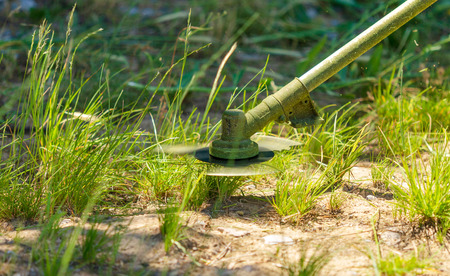Introduction to British Garden Culture
Gardens have long held a cherished place in the fabric of British heritage, serving as sanctuaries for relaxation, social gatherings, and a profound connection with nature. The quintessential British garden, often characterised by manicured lawns, vibrant borders, and carefully curated plantings, reflects both historical influences and evolving trends. Lawns, in particular, have emerged as a central feature within these spaces, symbolising not only status and aesthetic appeal but also the nation’s enduring love affair with outdoor living. From grand country estates to modest suburban plots, the lawn has remained a focal point, shaping the way Britons interact with their gardens across generations. As we delve into the history and evolution of the lawn mower, it is essential to appreciate the cultural significance of gardens in Britain and understand why well-kept lawns continue to be an integral element of both traditional and contemporary British outdoor environments.
Origins of the Lawn Mower
The invention of the lawn mower marked a significant turning point in the management and appearance of British gardens. Prior to its creation, lawns were maintained through labour-intensive methods such as scything or grazing by livestock. The development of the lawn mower not only revolutionised garden care but also became emblematic of British suburban culture.
The Early Prototypes
The concept for a mechanical lawn mower was born out of necessity during the early 19th century, at a time when manicured lawns were becoming increasingly fashionable among Britains landed gentry. Early prototypes were rudimentary, often heavy and difficult to manoeuvre, yet they represented a major leap forward in garden technology.
Key Inventors: Edwin Budding and His Contribution
Central to the history of the lawn mower is Edwin Budding, an engineer from Stroud, Gloucestershire. In 1830, Budding invented and patented the first mechanical lawn mower, inspired by a machine used for trimming cloth in textile mills. His design featured a series of blades arranged around a cylinder, allowing grass to be cut with a scissor-like action.
Comparison Table: Key Features of Early Lawn Mowers
| Inventor | Year | Main Material | Cutting Mechanism | Intended Use |
|---|---|---|---|---|
| Edwin Budding | 1830 | Iron & Brass | Cylinder (reel) blades | Manor houses & estates |
| Thomas Green | 1855 | Cast Iron | Cylinder with improvements | Parks & large gardens |
Initial Reception Within the UK
Budding’s invention was initially met with curiosity and some scepticism. However, its effectiveness quickly gained recognition among wealthy estate owners seeking immaculate lawns. By the mid-19th century, lawn mowers had become status symbols in their own right, reflecting both technological progress and social aspiration within British society.

3. Victorian Expansion and Social Impact
The Victorian era marked a transformative period for the lawn mower, as its popularity soared across Britain. The rapid industrialisation of the 19th century brought about significant technological advancements, making lawn mowers more accessible and efficient than ever before. This newfound accessibility coincided with a cultural shift: manicured lawns became a hallmark of respectability and refinement, symbolising order and prosperity within British society.
During this time, the British garden underwent a remarkable evolution. Lawn mowers played an instrumental role in shaping the aesthetics of both private estates and public parks. For affluent families, expansive green lawns became a centrepiece for social gatherings and leisure, reflecting their status and taste. Meanwhile, city planners and local authorities increasingly installed well-kept lawns in public spaces, such as Victoria Park in London, reinforcing civic pride and providing urban populations with much-needed recreational areas.
The spread of lawn mowing technology also fuelled a growing interest in gardening among the middle class. As lawn mowers became more affordable, homeowners could maintain neat gardens with relative ease. The neatly trimmed lawn soon emerged as an essential feature of the quintessential British home, influencing garden design trends for generations to come. In essence, the Victorian expansion of lawn mower use did not merely alter landscapes; it reshaped social attitudes towards outdoor spaces and cemented the lawn’s place at the heart of British garden culture.
4. Technological Advancements in the 20th Century
The 20th century marked a transformative era for lawn mowers in British gardens, characterised by rapid technological innovation and shifting cultural attitudes towards garden maintenance. The evolution from manual to powered mowers not only reflected advances in engineering but also responded to changes in British lifestyles and expectations for domestic outdoor spaces.
The Shift from Manual to Powered Mowers
Early in the century, the traditional hand-pushed cylinder mower, epitomised by British brands such as Ransomes, remained popular among homeowners. However, as electricity and petrol engines became more accessible, manufacturers began introducing powered models that drastically reduced the effort required to maintain a well-kept lawn. This transition enabled a broader segment of the population to achieve the quintessentially neat British garden without the strenuous labour previously involved.
Influence of British Engineering
British ingenuity played a pivotal role in these advancements. Companies like Atco and Qualcast pioneered innovations such as lightweight frames, improved cutting mechanisms, and more efficient motors. These developments set international benchmarks for reliability and performance, reinforcing Britains reputation for high-quality engineering in domestic appliances.
Changing Consumer Habits
The increasing affordability and availability of powered mowers coincided with significant social changes throughout the 1900s. Suburbanisation after World War II meant that more families had private gardens, while shorter working hours allowed greater leisure time for gardening pursuits. As a result, consumer preferences shifted towards convenience, efficiency, and ease-of-use—attributes increasingly delivered by modern mower designs.
Key Milestones in 20th Century Lawn Mower Evolution
| Decade | Technological Development | Impact on British Gardens |
|---|---|---|
| 1920s-1930s | Introduction of petrol-powered mowers | Larger lawns could be maintained with less effort; increased popularity among middle-class households |
| 1950s-1960s | Widespread use of electric mowers | Lawn care became quieter, cleaner, and safer; appeal broadened to include smaller urban gardens |
| 1970s-1980s | Development of lightweight plastic-bodied mowers | Mowers became more affordable and easier to handle; increased participation in home gardening |
| 1990s | Introduction of cordless battery-powered models | Enhanced mobility and convenience; further reduction in noise and emissions |
Conclusion of Technological Transformation
The technological advancements throughout the 20th century fundamentally reshaped the British approach to lawn care. Driven by both engineering excellence and evolving social trends, lawn mowers transitioned from exclusive tools for estate groundskeepers to everyday household items found across Britain’s suburban landscapes. This period laid the groundwork for further innovation into the 21st century, reflecting an enduring national appreciation for well-manicured gardens.
5. Modern Lawn Mowers and Sustainable Trends
In recent decades, British gardens have witnessed a transformative shift in lawn mower technology, driven by both innovation and a growing environmental consciousness. The traditional petrol-powered rotary mowers that once dominated the market are increasingly being replaced or complemented by a new generation of machines designed to address sustainability and efficiency concerns.
Electric Lawn Mowers: Quiet and Clean Alternatives
One of the most significant developments has been the widespread adoption of electric lawn mowers. These models offer British homeowners a quieter, emission-free alternative to their petrol counterparts, making them especially appealing in densely populated suburban neighbourhoods where noise and air quality are notable considerations. With advancements in battery technology, cordless electric mowers now provide sufficient power and run-time for most domestic gardens, eliminating the need for trailing cables and reducing reliance on fossil fuels.
Robotic Mowers: Automation Meets Precision
The rise of robotic mowers represents another leap forward in British garden maintenance. These autonomous machines can be programmed to maintain lawns with minimal human intervention, navigating complex garden layouts and adjusting their cutting schedules according to grass growth rates. Robotic mowers not only save time but also promote healthier lawns by providing frequent, light cuts that encourage denser growth—a practice well-suited to the lush green lawns prized in British culture.
Eco-Friendly Innovations and Sustainable Practices
As environmental awareness continues to shape consumer preferences across the UK, manufacturers are introducing eco-friendly features such as mulching capabilities, which return finely cut clippings to the soil as natural fertiliser. There is also an increased focus on recyclable materials and energy-efficient motors in mower design. Additionally, some British gardeners are turning to manual cylinder mowers for smaller plots, drawn by their zero-emission operation and nostalgic charm. These trends reflect a broader movement towards sustainability in British gardening—balancing technological advancement with responsibility for local ecosystems.
Together, these modern innovations exemplify how the evolution of the lawn mower in Britain is increasingly defined by a commitment to both convenience and environmental stewardship, ensuring that the quintessential British lawn remains both beautiful and sustainable for generations to come.
6. The Lawn Mower’s Place in Today’s British Gardens
In contemporary Britain, the lawn mower remains a fixture in gardens large and small, symbolising more than just a tool for grass maintenance. Its contribution to modern gardening practices is significant, as it enables homeowners and professional gardeners alike to maintain the quintessentially neat and green lawns that are so closely tied to British cultural identity. The act of mowing itself has evolved into a weekly ritual during the growing season, reinforcing values of orderliness and pride in one’s home environment.
The Role of Lawns in British Society
Lawns have long been regarded as a status symbol, representing both affluence and an appreciation for nature. Today, while the aesthetic ideal of a perfectly manicured lawn persists, there is growing recognition of alternative approaches that balance tradition with environmental concerns. This cultural shift is reflected in the variety of lawn mowers available on the market—from classic cylinder mowers to battery-powered automowers—catering to diverse needs and ecological considerations.
Cultural Identity and Community
The communal aspect of lawn care remains strong in Britain. Village greens and public parks, maintained by larger-scale mowing equipment, continue to serve as focal points for social gatherings and local events. On a domestic level, well-kept lawns are often associated with hospitality and neighbourliness, further embedding the lawn mower in the fabric of British life.
Debate: Tradition versus Sustainability
Despite its ingrained status, the traditional British lawn—and by extension, the mower—faces scrutiny amid debates about biodiversity and sustainability. Critics argue that frequent mowing discourages wildflowers and pollinators, prompting some gardeners to embrace “rewilding” or low-mow practices. Others remain steadfast in upholding the classic striped lawn as an emblem of heritage. Ultimately, the evolution of the lawn mower mirrors broader societal conversations about balancing cherished customs with pressing environmental responsibilities.


